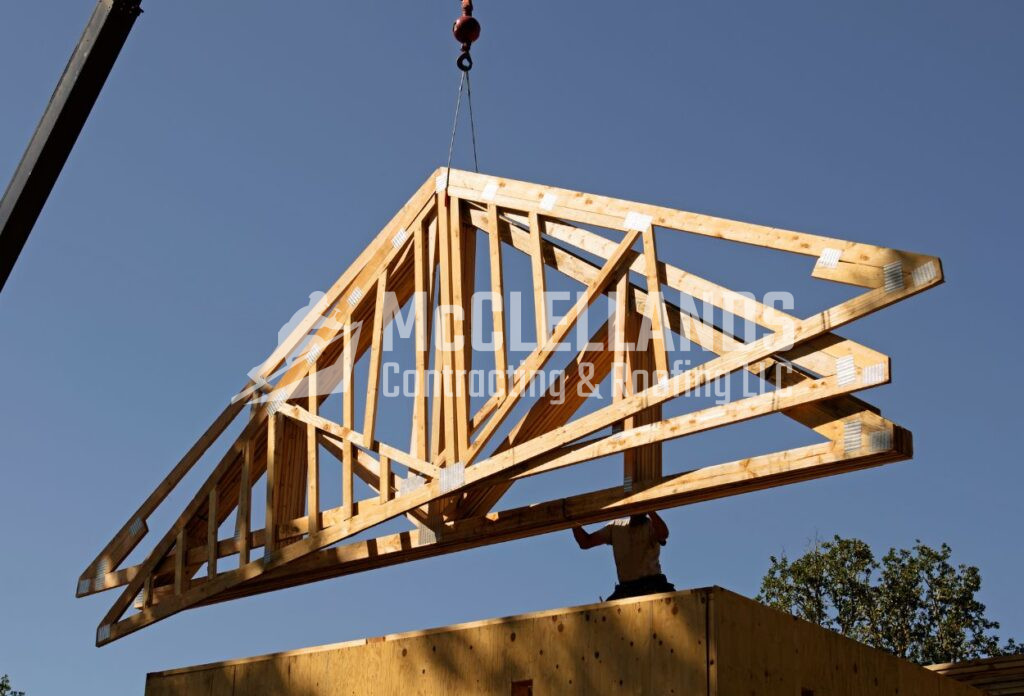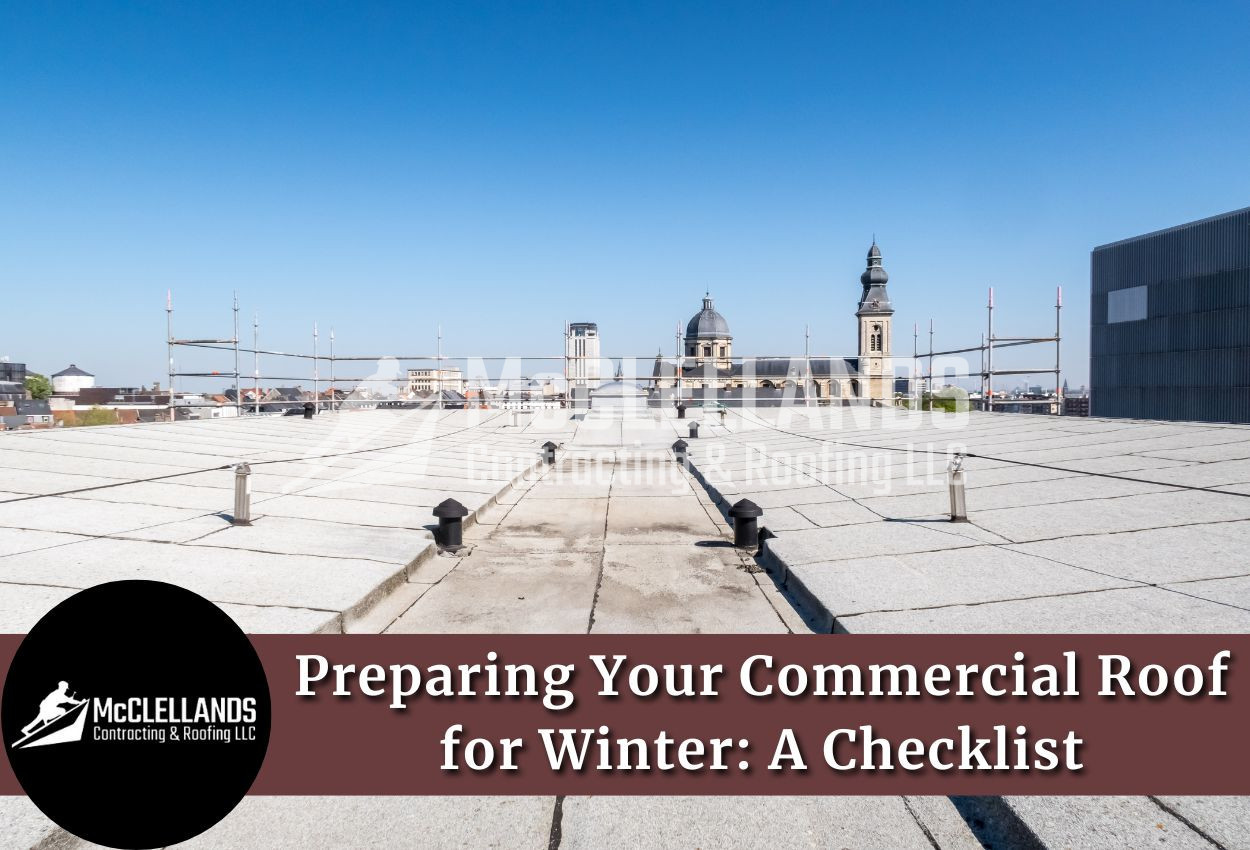When you look up at your roof from the street, you might simply see shingles, but your roof is actually a complex system made up of multiple important layers that work together to protect your home. Each layer serves a specific purpose, and understanding these components can help you make informed decisions about your roof's maintenance and replacement needs.
In this article, we will cover the different layers of a roof and their functions. At McClellands Contracting and Roofing, LLC, we provide professional roofing services in Pittsburgh, PA, and our team is here to answer any questions related to your roof. For a no-obligation discussion with professional roofers, feel free to call us today at (412) 353-5660.
How Many Layers Are There In A Roof?
The exact number of roof layers differs for roofs depending on their type, complexity, and the local weather. But generally, a roof has structural, foundational, water management, protective, primary, and finishing layers. Now this might sound confusing, but we will discuss them in detail below.
#1 Structural Roof Layer
Roof installation starts with creating the skeleton of your roof. The structural layer is basically the base of the other roof layers.
This layer consists of rafters and joists or trusses that provide the fundamental support and shape for the entire roofing system. Understanding these components is important to comprehend how a roof maintains its integrity and distributes weight.
👉 Rafters

Rafters are sloped beams that extend from the building's exterior walls up to the peak of the roof. They create the roof's pitch and support the roof deck. They are generally made from lumber, like 2-by-8, 2-by-10, or 2-by-12 boards. Here are the different types of roof rafters that you will find on the market:
Common rafters: Standard straight rafters that run from the roof's ridge to the exterior wall
Hip rafters: Diagonal rafters that form the hip of a hip roof
Valley rafters: Rafters that create the internal angle where two roof planes meet
👉 Joists
Roof joists are horizontal structural members that run perpendicular to rafters, and they provide additional support to the roof deck.
They provide additional structural support and help distribute the roof's weight evenly. Roof joists provide a stable base for the decking, and they can be made from lumber, steel, or engineered wood.
👉 Trusses

Generally, homeowners have the choice between rafters or trusses. Roof trusses are pre-engineered, triangular structural frameworks that provide support and stability. Unlike traditional rafters, trusses are factory-built for precise engineering. They are more cost-effective for larger buildings as they are capable of spanning greater distances and are designed to distribute weight more efficiently.
Here are the common types of roof trusses that you can choose for your home:
1. King Post Truss: Simple design with a central vertical post
2. Fink Truss: Most common, with web members forming a "W" pattern
3. Scissor Truss: Creates vaulted ceiling spaces
4. Attic Truss: Provides usable storage space within the roof structure
The choice between rafters, trusses, and specific joist configurations depends on the size and design of the building, local building codes, climate conditions, and budget constraints.
#2 Foundational Roof Layer
This layer in your roof is known as foundational for a reason, as it consists of components that serve as the foundation of your roof.
👉 Roof Decking
This is perhaps the most critical component of your roofing system. Also known as sheathing, a roof deck is a wooden foundation consisting of either plywood or oriented strand board (OSB) panels that create the base for all other roofing materials.
All the other layers of your roof will be put on the roof deck, so it needs to be strong and stable to support everything that goes on top of it.
👉 Energy-Efficiency Roof Layer (Optional)
Modern roofing systems often incorporate additional layers beneath the decking, such as radiant barriers or insulation boards.
These innovative components can improve your home's energy efficiency, helping to regulate indoor temperatures and potentially reduce energy costs.
#3 Water Management Roof Layer
Another important layer in a roof is the water management layer. These components are important for preventing water-related damage to your roof.
👉 Drip Edge
Moving up from the decking, you'll find the drip edge, subtle yet important metal flashing installed along your roof's edges. This component might seem simple, but it plays an important role in directing water away from your fascia boards and preventing moisture from sneaking underneath your roofing materials. Without a properly installed drip edge, you might face serious water damage issues that could otherwise be easily prevented.
👉 Ice and Water Barrier
In areas particularly vulnerable to water damage, such as valleys and around penetrations, you'll find a special waterproof membrane called the ice and water shield. This layer is particularly important in regions that experience harsh winters, as it prevents water from seeping into the decking and potential damage to your home's interior.
#4 Protective Roof Layer
Now comes the protective layer. This layer includes your roof’s underlayment and starter shingles.
👉 Underlayment
Rather than leaving your decking exposed directly to your shingles, the roof underlayment provides an additional barrier against the elements. Whether using traditional felt paper or synthetic materials, this layer offers crucial protection against water infiltration and helps regulate your roof's temperature. Modern synthetic underlayment offers long-lasting protection while being more durable than traditional options.
👉 Starter Shingles
Before installing your main roofing material, starter shingles create a crucial first line of defense at your roof's edges. These specialized shingles include an adhesive strip that seals down the first row of regular shingles, providing enhanced wind resistance and preventing water infiltration at your roof's most vulnerable points.
#5 Primary Layer
Once the underlayment is done, the roofers will safely start installing the primary layer of your roof. This layer includes your main roofing material and the flashing.
👉 Main Roofing Material
Now, we reach the layer most visible to the normal observer, which is your primary roofing material. Whether you choose architectural shingles, metal panels, or another option, this layer is your roof's primary defense against weather elements. Each type of roofing material offers different benefits in terms of durability, aesthetics, and protection.
👉 Flashing
Throughout your roof, you'll find various types of flashing. Flashing is metal pieces strategically placed around chimneys, vents, skylights, and valleys. This component directs water away from vulnerable areas where different parts of your roof meet. Proper flashing installation is perhaps one of the most critical aspects of a well-constructed roof, as improper installation can lead to persistent leaks.
#6 Finishing and Ventilation Roof Layer
Once the primary layer of your roof is installed, the final layer includes the finishing touches and ventilation components of your roof.
👉 Ridge Caps
At the peak of your roof, ridge caps provide both an attractive finish and crucial protection where roof slopes meet.
These specially designed pieces are thicker than standard shingles and are engineered to bend over the ridge while maintaining water-tight protection.
👉 Ventilation Components
Your roof needs to breathe, and proper ventilation is essential for maintaining its longevity. Various types of vents, including ridge vents, soffit vents, and box vents, work together to create proper airflow through your attic space.
A ventilation system helps prevent moisture buildup and maintains proper temperature control throughout the year. These vents are installed after the main roofing material and sealed to prevent leaks around the edges.
Additional Important Components Of A Roof
Other than these important roof layers, there are other components that help maintain the functionality and appearance of your roof. Some of them include!
#1 Soffits and Fascia Boards
Located beneath the roofline, soffits and fascia boards protect your roof's edges. They can be vented to allow airflow into the attic and protect the roof’s underlying structure. Soffits and fascia prevent pest intrusion and provide a clean appearance to your home.
#2 Roof Valleys
Roof valleys are a critical point where water runoff converges. Special valley flashing or woven shingles are important for proper water drainage, preventing potential leaks and water damage. These areas require extra attention during installation to maintain your roof's water-resistant integrity.
#3 Gutter System
While not technically a roof layer, gutters are an integral part of your roofing system. They direct water away from your home's foundation and prevent soil erosion. Gutters work with downspouts, protect your home's foundation, and reduce the risk of basement flooding.
#4 Roofing Adhesives and Sealants
Roof adhesives are especially important for specific roof types like flat roofs. These components create a watertight seal and bond the roofing materials together, providing additional moisture protection.
Final Thoughts
Now that you have an idea of the layers of your roof, it is also important to remember that each of these needs proper installation. Each part of your roof must be installed correctly to make sure your roof protects your property for years to come.
It is recommended to look for reputed local roofers who have industry certifications and years of experience.
Get Professional Roof Installation in Pennsylvania
At McClellands Contracting and Roofing, LLC, we offer professional roofing services in Pittsburgh and the surrounding areas of Pennsylvania.
If you are worried about the existing condition of your roof, schedule a professional, free roof inspection with us today. To speak with one of our experts or to get a custom quote for your roofing project, feel free to call us at (412) 353-5660.




